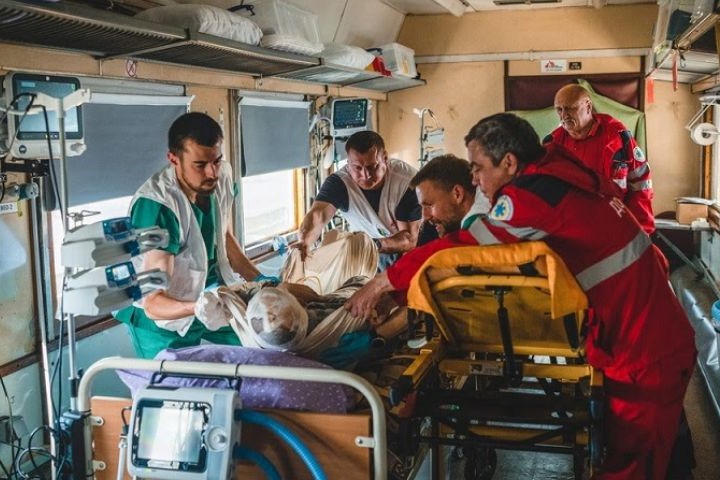
Consequences of chest trauma: focus on cardiac contusion
Cardiac contusion is defined as chest trauma that causes a contusion of the heart by tearing the walls of the heart muscle or damaging a heart valve
You will have a rapid heartbeat, difficulty breathing or excessively low blood pressure.
If the patient, in addition to the cardiac contusion, suffers from tachycardia, bradycardia or irregular heartbeat, hospitalization will be necessary in order to monitor the rhythm and cardiac activity.
If there is damage to a heart valve or tears in the heart wall, surgery will be required.
Cardiac contusions will be the result of strong impact trauma, road accidents, falls from great heights or even direct trauma
If the injuries to the heart muscle are severe, the patient could even die. The injuries tend to get worse over a few hours.
A heart contusion could alter the normal heart rhythm, speeding it up, slowing it down or making it irregular
The laceration of the heart wall, with respective ventricular rupture, triggers bleeding that can prove fatal. If the bleeding is from a small laceration, it will not extend beyond the pericardium for some time, which will allow it to be treated; this pooling of blood could compromise the blood filling functions of the heart muscle.
It is rare, but it could happen that the septum that separates the heart cavities can be torn; rupture that may remain asymptomatic for some time and will then initiate heart failure.
Sudden cardiac arrest may also occur as a result of a chest injury; this cardiac arrest takes the name of commotio cordis, and occurs in all those athletes who in sports can be hit by objects that move extremely quickly, such as in baseball.
Cardiac arrest, in commotio cordis, is not fully known; it is thought to be a consequence of the trauma that occurs in a critical phase of the cycle that produces the heartbeat; the trauma will interrupt the electrical signals that allow the heart to pump blood continuously and regularly.
Heart contusion symptoms can be different; generally you will feel pain, bruising in the ribs and sternum area.
Other symptoms will be heart failure, breathlessness, and in the worst cases patients will go into a state of shock; the pressure will drop below the limit threshold, sweating and cyanosis will occur, up to anomalies and alterations of the heartbeat.
In case of suspicion of cardiac contusion, in the diagnostic phase, an electrocardiogram and cardiac echocardiogram will be performed; furthermore, the blood tests will reveal the presence of serum markers that will be released by the damaged heart.
From the echocardiogram, it will instead be possible to find abnormalities in the movement of the heart walls, the possible presence of blood or fluids around the heart muscle, the rupture of a wall of the heart or damage to the heart valves.
Patients suffering from heart rhythm abnormalities will necessarily have to remain in the hospital under observation to prevent the abnormalities from degenerating suddenly and in some cases hospitalization may be necessary.
Anyone who, following the trauma, should experience fainting episodes, must necessarily undergo medical evaluations to understand if cardiac arrest is in progress; if there should be cardiac arrest, it will be absolutely necessary to intervene promptly with the execution of cardiopulmonary resuscitation using the defibrillator, a defibrillator which increases the chances of survival by 35%.
For this reason, the presence of defibrillators in as many places as possible is necessary.
Read Also
Emergency Live Even More…Live: Download The New Free App Of Your Newspaper For IOS And Android
Myocardiopathy: What Is It And How To Treat It?
Venous Thrombosis: From Symptoms To New Drugs
Cyanogenic Congenital Heart Disease: Transposition Of The Great Arteries
Heart Murmur: What Is It And What Are The Symptoms?
Heart Rate: What Is Bradycardia?
Branch Block: The Causes And Consequences To Take Into Account
Cardiopulmonary Resuscitation Manoeuvres: Management Of The LUCAS Chest Compressor
Supraventricular Tachycardia: Definition, Diagnosis, Treatment, And Prognosis
Identifying Tachycardias: What It Is, What It Causes And How To Intervene On A Tachycardia
Myocardial Infarction: Causes, Symptoms, Diagnosis And Treatment
Aortic Insufficiency: Causes, Symptoms, Diagnosis And Treatment Of Aortic Regurgitation
Congenital Heart Disease: What Is Aortic Bicuspidia?
Atrial Fibrillation: Definition, Causes, Symptoms, Diagnosis And Treatment
Ventricular Fibrillation Is One Of The Most Serious Cardiac Arrhythmias: Let’s Find Out About It
Atrial Flutter: Definition, Causes, Symptoms, Diagnosis And Treatment
What Is Echocolordoppler Of The Supra-Aortic Trunks (Carotids)?
What Is The Loop Recorder? Discovering Home Telemetry
Cardiac Holter, The Characteristics Of The 24-Hour Electrocardiogram
Peripheral Arteriopathy: Symptoms And Diagnosis
Endocavitary Electrophysiological Study: What Does This Examination Consist Of?
Cardiac Catheterisation, What Is This Examination?
Echo Doppler: What It Is And What It Is For
Transesophageal Echocardiogram: What Does It Consist Of?
Paediatric Echocardiogram: Definition And Use
Heart Diseases And Alarm Bells: Angina Pectoris
Fakes That Are Close To Our Hearts: Heart Disease And False Myths
Sleep Apnoea And Cardiovascular Disease: Correlation Between Sleep And Heart


